Question
If M is related to Agriculture and W is related to
English in a certain way. Then, E is related to which of the following? Read the following information carefully and answer the questions given below. Seven persons A, E, F, M, N, K and W are attending seven different exams on different subjects viz., Reasoning, Quantitative, English, General awareness, Agriculture, Hindi and Computer on different days of the same week starts from Monday to Sunday. The given information is not necessary in the same order. Some of them are male and some of them are female persons. W attends the exam immediately after the one who attends the General awareness exam and she does not attend the Agriculture exam. Three persons attends the exams between the one who attends Quantitative exam and A and both of them does not attend the exam on first or last day of the week. E, she attends the exam immediately before the one who attends Quantitative exam. As many persons attend the exams before W is same as after the one who attends the Agriculture exam. W does not attend the exam on last day of the week. Only one person attends the exam between K and the one who attends Reasoning exam. The one who attends the Reasoning exam is not a female person. More than two persons attend the exams between F and the one who attends the Computer exam. A and the one who attends Hindi exam belongs to the same gender. F does not attend the Hindi exam. The one who attends the exam on last day and on the Tuesday are does not belong to the same gender. K attend the exam immediately before his brother M attends the exam. The persons attend the exams immediately before and after A are does not belong to the same genderSolution
Three persons attends the exams between the one who attends Quantitative exam and A and both of them does not attend the exam on first or last day of the week. E, she attends the exam immediately before the one who attends Quantitative exam. 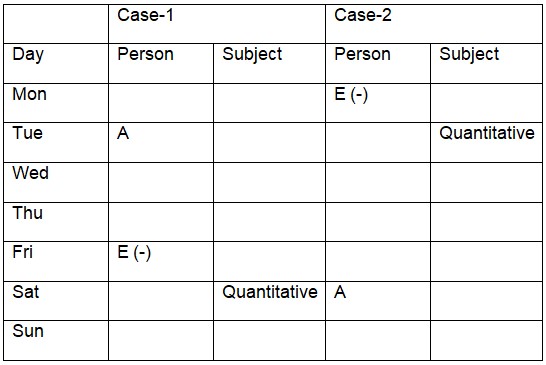 W attends the exam immediately after the one who attends the General awareness exam and she does not attend the Agriculture exam. As many persons attend the exams before W is same as after the one who attends the Agriculture exam. W does not attend the exam on last day of the week.
W attends the exam immediately after the one who attends the General awareness exam and she does not attend the Agriculture exam. As many persons attend the exams before W is same as after the one who attends the Agriculture exam. W does not attend the exam on last day of the week. 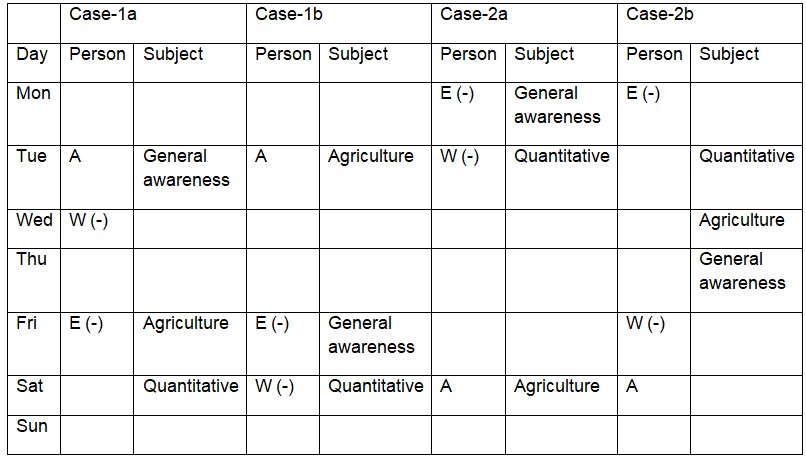 K attend the exam immediately before his brother M attends the exam. Only one person attends the exam between K and the one who attends Reasoning exam. The one who attends the Reasoning exam is not a female person. So, Case-2(b) will be dropped this is because the person who attends reasoning is a male person we can’t fix reasoning for female candidates.
K attend the exam immediately before his brother M attends the exam. Only one person attends the exam between K and the one who attends Reasoning exam. The one who attends the Reasoning exam is not a female person. So, Case-2(b) will be dropped this is because the person who attends reasoning is a male person we can’t fix reasoning for female candidates. 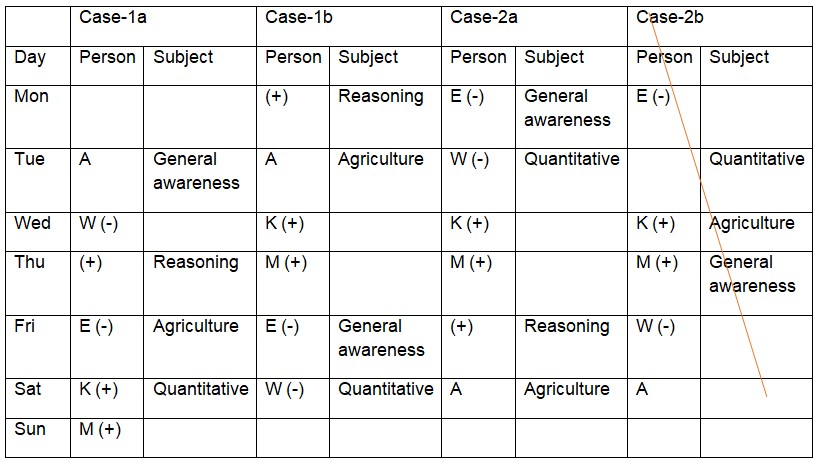 The persons attend the exams immediately before and after A are does not belong to the same gender. So, Case-1(b) will be dropped. More than two persons attend the exams between F and the one who attends the Computer exam.
The persons attend the exams immediately before and after A are does not belong to the same gender. So, Case-1(b) will be dropped. More than two persons attend the exams between F and the one who attends the Computer exam. 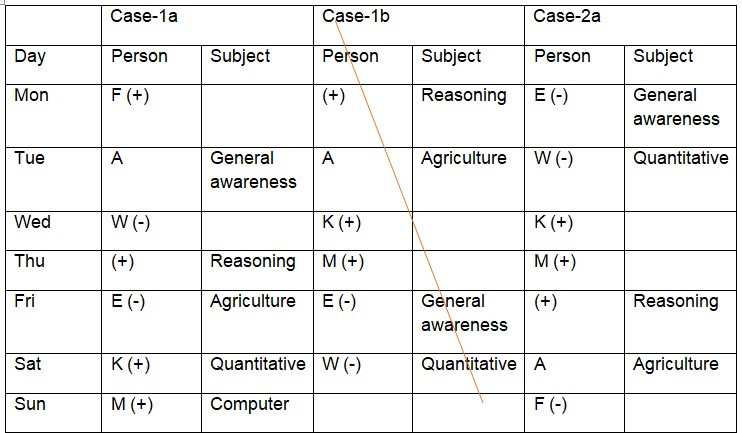 A and the one who attends Hindi exam belongs to the same gender. F does not attend the Hindi exam. The one who attends the exam on last day and on the Tuesday are does not belong to the same gender. So, Case-2(a) will be dropped.
A and the one who attends Hindi exam belongs to the same gender. F does not attend the Hindi exam. The one who attends the exam on last day and on the Tuesday are does not belong to the same gender. So, Case-2(a) will be dropped. 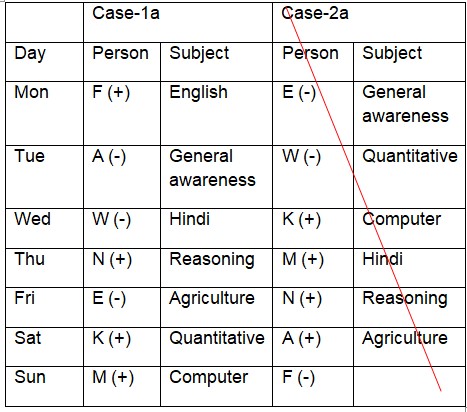 So final arrangement-
So final arrangement- 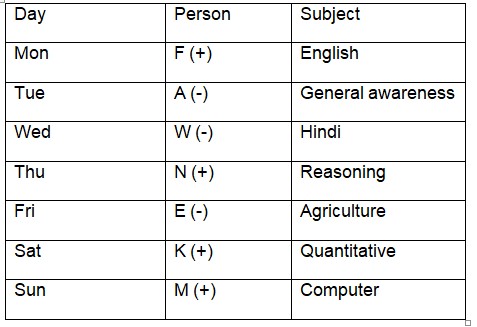
What is the time complexity of searching for an element in a sorted array using binary search?
Which operation is used to add an element to the top of a stack?
Which OOP principle allows for restricting access to certain parts of an object while exposing only necessary parts for interaction?
Which of the following is a primary advantage of using a star schema in a data warehouse design?
Which of the following is a key principle of the SOLID design principles that focuses on ensuring a class has only one reason to change?
Which of the following OWASP Top 10 risks involves insecure coding practices that allow attackers to gain access to sensitive data, such as usernames a...
Which of the following represents the Preorder Traversal of the binary tree given below?
A / \ B C ...What is the primary purpose of a B+ Tree in a database management system?
Given the IP address 192.168.10.5 and the subnet mask 255.255.255.240 , what is the range of valid host addresses in this subnet?
What is a key advantage of containerization over traditional virtual machines?
Relevant for Exams:


